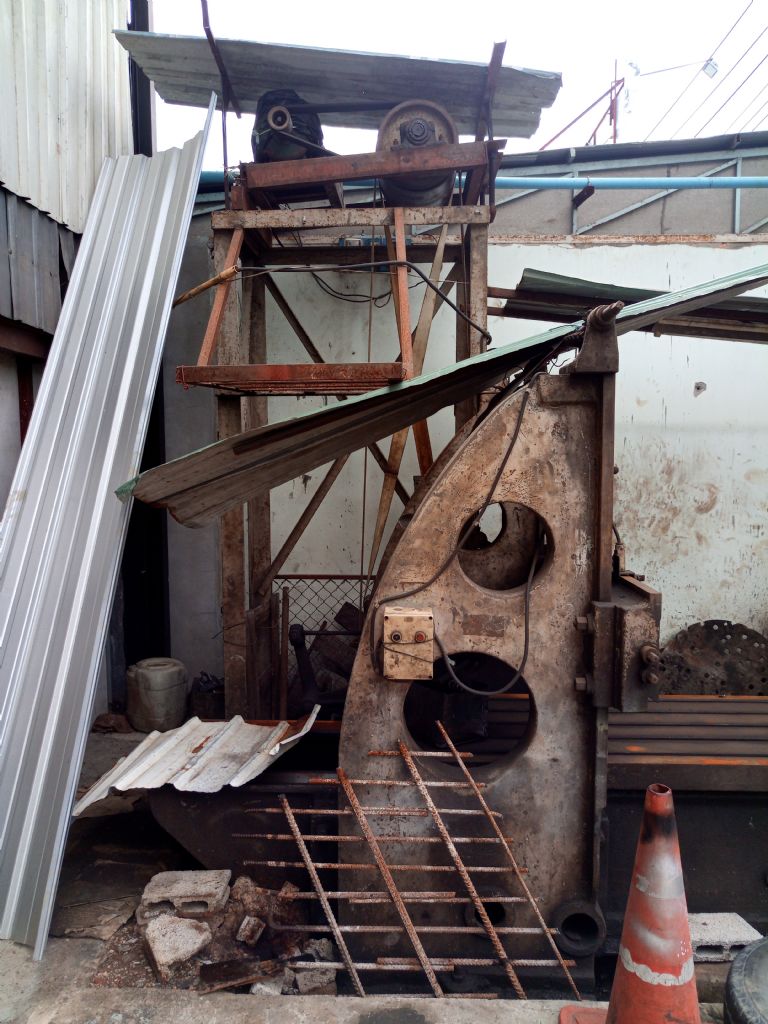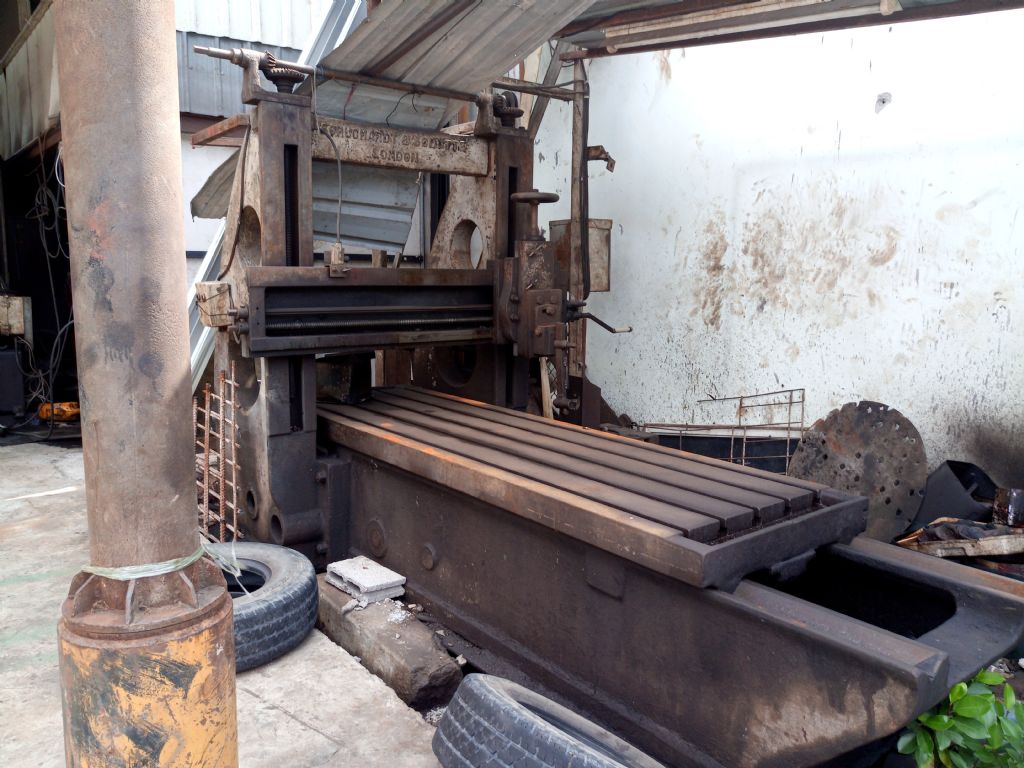Quite a small planer & quite basic – most (probably more recent than this) that I came across had at least two toolboxes on the crossrail and one one each vertical way on the columns. This one doesn't look like it was intended to have the vertical running toolboxes, as the crossrail ways (also used for the vertical toolboxes) don't go below the top of the table. I have seen one operating with all 4 tools at once roughing out the top & both sides lathe bed casting – quite a time saver if the job allowed it.
At my last employment we converted a Butler planer (8' x 8' x 40' IIRC – rescued from "outside storage" at a paper machinery manufacturer) to CNC operation. While primarily a milling machine (a new milling head replaced one of the toolboxes), the customer wanted to retain the planing operation. The customer made points & crossings for railways & tramways and thought that they could plane the wheel flange clearance groove in large radius crossing castings. It did work after a fashion, but the problem was tool clearance in the groove – the tool really needed an additional rotation axis to keep the tool perpendicular to the rail face as it went round the curve & as it didn't have one the tool had to be ground back so much to give clearance that it was too weak.. We used a 37Kw AC spindle motor in servo mode though a ZF low backlash reduction gearbox to drive the table, with two sets of parameters for planing or milling operation.
Sadly now a largely dissappeared breed – not "cost effective" enough for a modern production environment that seemingly doesn't value their strengths & capabilities. A situation that I have, unhappily, helped along at my current employment when the owner decided to scrap a very tidy, one previous owner Swift Summerskill planer rather than convert it to a milling machine. There have been a number of machines I have been glad to see the scrap man take away in bits, but that wasn't one of them & I still feel bad about it.
Nigel B
 Neil Wyatt.
Neil Wyatt.




 everal shops local to me still use planers for surfacing die plates for stamping dies before final finish by Blanchard grinding.
everal shops local to me still use planers for surfacing die plates for stamping dies before final finish by Blanchard grinding.

